5 Revolutionary Technologies Inside Aruba's New 8400 Core Switch
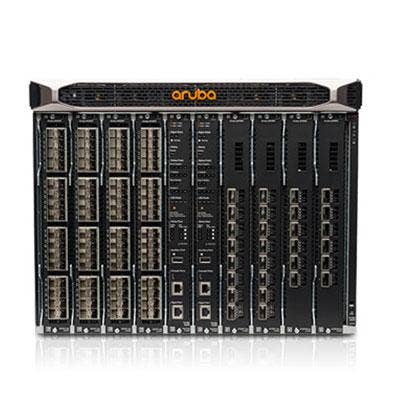
Aruba's First Core Switch
Aruba Networks sent shockwaves through the networking industry with the launch of its first ever core switch: the Aruba 8400 Core Switch Series.
Partners said the new switch provides a legitimate challenger to Cisco at the network core, bringing automation and software intelligence to organizations looking for an alternative to Cisco. Aruba, a Hewlett Packard Enterprise subsidiary, says its revolutionary technology is changing the game for network operators, partners and customers.
In an interview with CRN, Michael Dickman, product management leader for Aruba's campus and branch Networking Business, breaks down some of the coolest and most innovative features the 8400 switch is bringing to the market.
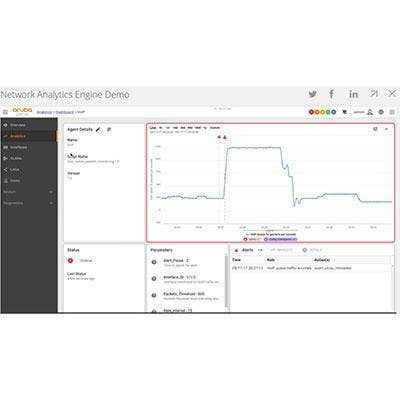
Network Analytics Engine
Customers get really excited about our network analytics engine. It provides the ability to monitor and troubleshoot the network, system, applications and security issues easily through simple [python agents] and REST APIs.
If you’re a network operator, you get blamed for everything. Someone can't get to an application or lost a call – the network gets blamed for everything. What we focused on is taking a step back and looking at the network. When the network gets deployed, often there is a suite of technologies and companies around the network for monitoring and troubleshooting – things like NetFlow, companies like NetScout and Gigamon – there's a lot of infrastructure that gets built around the network to try to detect what's gone wrong and figure out what's happened. We decided to take the most prevalent and prominent use cases around troubleshooting, visibility and monitoring – things that the buyer and network operator cares about – and build that right into the switch. On-board analytics.
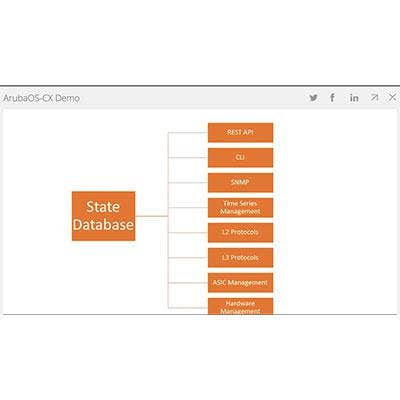
Time-Series Data Base
What's unique is that the switch itself acts as a time-series data base inside the switch that allows you to develop software modules. So it can record and monitor what is happening in the network itself. All of the switches today, especially for campus, if you want to record what's happening, you have to send it someone else. It allows for historical troubleshooting and analysis of historical trends [to predict and avoid] future issues … This is the first time-series data base to our knowledge that's been embedded in the network.
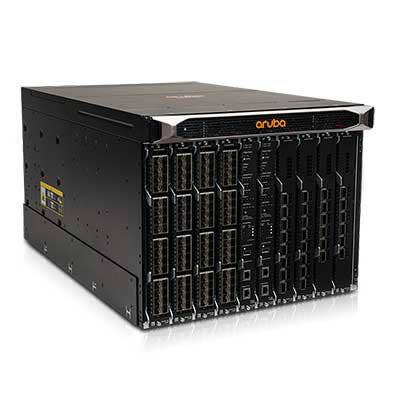
ArubaOS-CX Operating System
The [ArubaOS-CX] operating system is designed around a data model that's described in a database schema and everything about the switch is held in a data base. So not just the features and the configurations parameters, but ephemeral data …. As we compile the code, because the data model describes everything, we just autogenerate the REST API's for everything that's in the database which is everything that's in the switch and everything it can do. In the weeks or months after a release, I don’t make engineers build the API's for the features we built. In our system, if you build a feature, the APIs are automatically derived as part of how we built the code, which is really important.

API's To Spreadsheets
There's a small script that basically takes all the API's and converts them into Google spreadsheet functions. You don’t need to be a programmer. If you can use a spreadsheet you can automate and configure the switch. You'll see people in a spreadsheet sucking information off the script, dynamically monitoring it … When we talk about open and programmable, the right person with the right tool can interface to it as they would a proper piece of software.
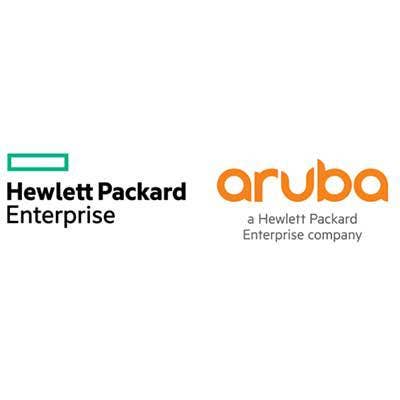
'User Extensible'
You can actually upload your own small scripts right onto the switch to customize what's it's looking for and what actions it takes. So it can be tailored for a given vertical or a customer so a partner or a customer doesn't have to come back to HPE and say, 'We need you to look for these kinds of characteristics of an event and here's the action to take.' It's actually user extensible and it can be defined by a customer or partner.
Someone can simply say, 'I want to monitor all the addresses of the heart rate monitors on this hospital floor and if I ever see a port disconnect that was connected to a heart rate monitor, I want an SMS text sent to this person because we deem that to be critical. And when it happens, I want you to record the statistics of all the interfaces it was connected to, check if it's gone down within the last 24 hours -- do this and that.' It's all saved. So once you gather it all up, in real-time at that moment you can define what you're looking at and what to do. That's what's really unique about it.